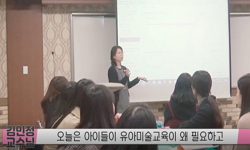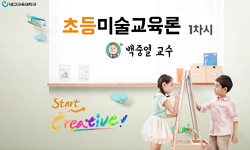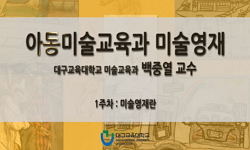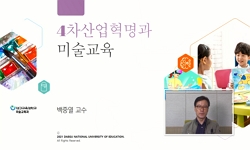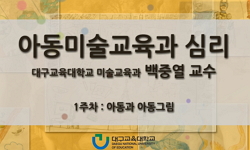The purpose of this study is to investigate the historical origins of the Korean art college entrance exam. Although the exam has undergone significant changes in the past decade, the format from 80 years ago has remained in college entrance exams of ...
http://chineseinput.net/에서 pinyin(병음)방식으로 중국어를 변환할 수 있습니다.
변환된 중국어를 복사하여 사용하시면 됩니다.
- 中文 을 입력하시려면 zhongwen을 입력하시고 space를누르시면됩니다.
- 北京 을 입력하시려면 beijing을 입력하시고 space를 누르시면 됩니다.
부가정보
다국어 초록 (Multilingual Abstract)
The purpose of this study is to investigate the historical origins of the Korean art college entrance exam. Although the exam has undergone significant changes in the past decade, the format from 80 years ago has remained in college entrance exams of art education majors and teacher certification exams. To examine the historical precedents of the art college entrance exam, this study focuses specifically on postcolonial South Korea (1945-1950s), the period when the first contemporary art colleges were established. Through an analysis of primary and secondary sources, the study identifies two major influences. The first influence is the global phenomenon of a utilitarian approach to art of the late 19th and early 20th century, which also prevailed in Korean art history. In this perspective, art was considered primarily as a skill rather than an independent field of study. Consequently, art college entrance exams have always been held in conjunction with the national academic entrance exam once a year, with the content and assessment focused on realistic rendering and expression. The second influence is the direct impact of the Japanese art education system. Japan had established a standardized art curriculum based on plaster figure dessin and formal composition in secondary and higher education, eventually developing a uniform format of their art college entrance exam. Many Korean artists who later became faculty members of the first Korean art colleges since 1945 had studied in Japan and implemented the same format of the exam into Korean art colleges. As a result, Korea's art college entrance exam and curriculum were shaped by Japan's assimilation of Western culture, particularly the French Beaux-Arts art education of the late 19th century. Despite criticism for its uniformity and lack of creativity, this format persisted as it was regarded as the most objective and fair assessment due to the prevalence of corruption, high competition, and efficiency.
동일학술지(권/호) 다른 논문
-
관광지 유형에 따른 관광지 길 찾기 경험요인 및 핵심 터치포인트 발굴
- 한국기초조형학회
- 박세훈
- 2023
- KCI등재
-
텍스타일 산업의 사회적가치 창출을 위한 디자인개발 사례연구 -환경친화적 개념 적용사례를 중심으로
- 한국기초조형학회
- 박현주
- 2023
- KCI등재
-
20~69세 키 큰 성인 남성의 하반신 체형 특성과 유형분석
- 한국기초조형학회
- 김민정
- 2023
- KCI등재
-
별건곤 표지 일러스트레이션에 나타난 취미의 시각화 양상
- 한국기초조형학회
- 이은주
- 2023
- KCI등재





 KISS
KISS